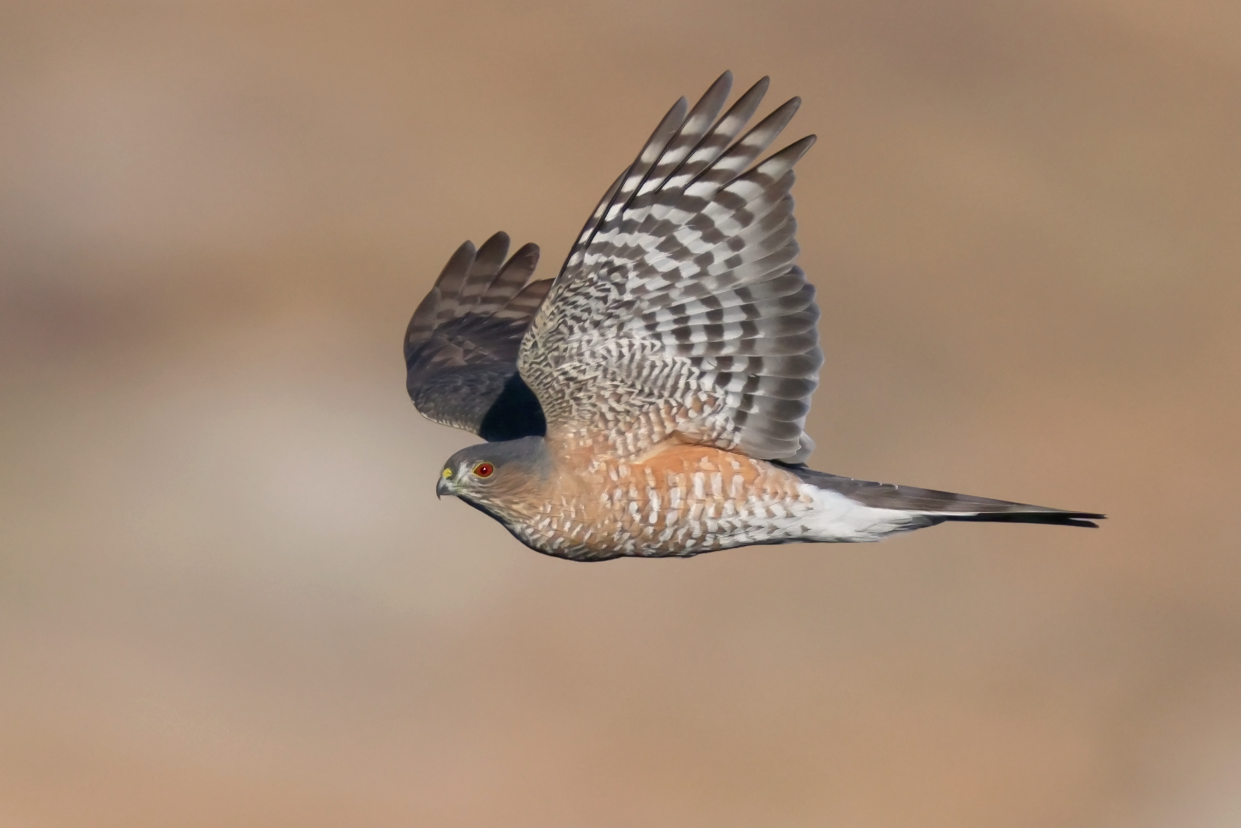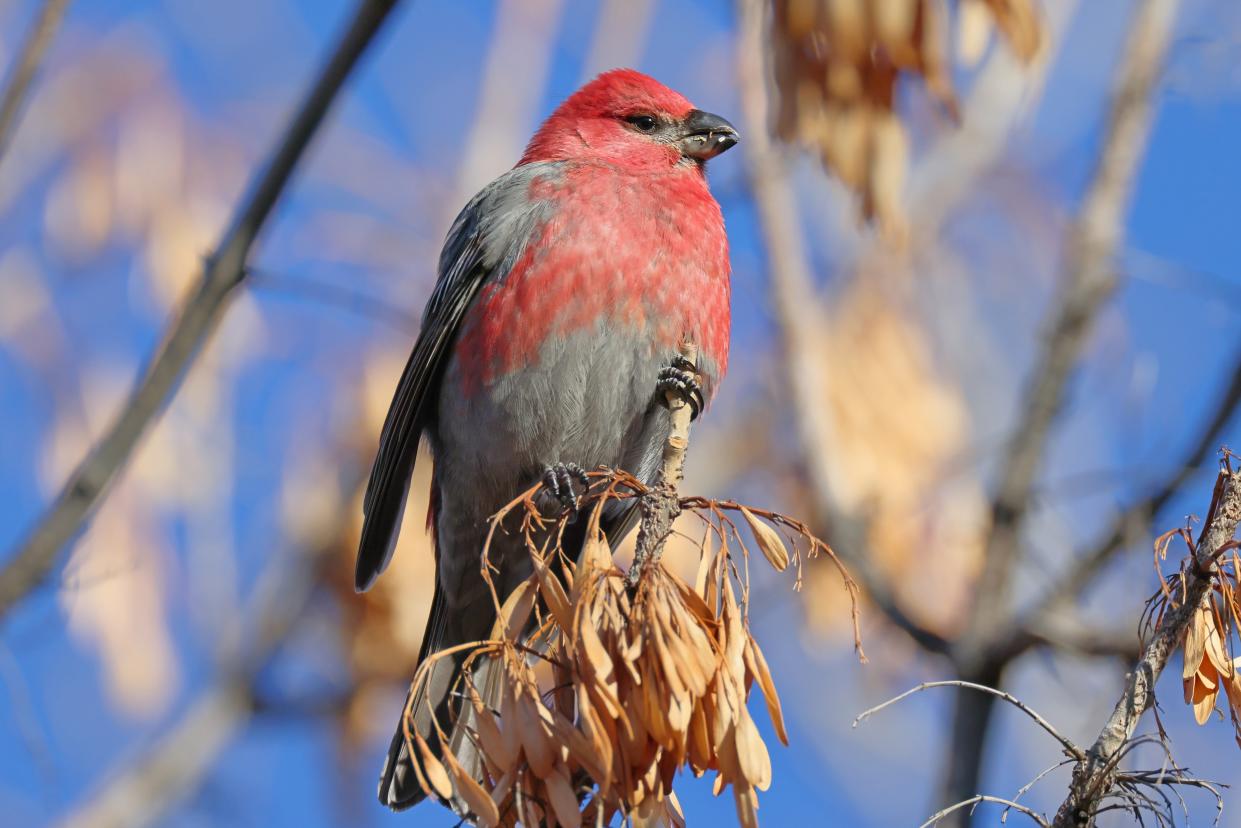American kestrel declines observed at Cascade County's annual Christmas Bird Count

On a warm but blustery morning 22 “birders” crisscrossed Cascade County's fields, streams and wetlands to take the measure of local bird populations. Dec. 17 marked the 50th annual Christmas Bird Count hosted by the Upper Missouri Breaks chapter of the National Audubon Society.
With temperatures in the mid-40s to low-50s, it was far more pleasant for the birders than the single-digit temperatures and arctic winds they faced in 2022. The participants were divided into 10 areas of our 15-mile radius count circle. The count circle‘s longitude and latitude are registered with National Audubon Society’s Christmas Bird Count registry, so the data gathered is specific the area. Participants counted 59 distinct bird species and 8,602 individual birds on count day, but the unseasonably warm temperatures and gusty southwest winds complicated things as well.
“Being warm was lovely as far as us being out there,” explained Nora Gray, a primary organizer of the day’s event, “but with no ice the water birds are not congregated where there’s open water. So, there weren’t that many birds to count on the water because they can be anywhere. They don’t have to be near where we could easily count them.”
“The mallards and the geese were much lower this year,” Gray noted. “We saw quite a few, but not like we’ve had in the past for numbers. For Canada Geese we saw 3,690 this year, and back in 2018 we had 18,636. That’s a huge drop. “I think it has to do with avian flu. Last year we saw quite a few dead geese.”
Troubling declines for American kestrels
Another concerning trend occurring in Cascade County and being observed nationally is a continued decline in the numbers of American kestrels.
“Kestrels are a type of falcon,” Gray explained. “They used to be called Grasshopper Hawks. They’ll sit on telephone poles or wires, and they’ll fly down and catch insects, grasshoppers, and mice. We did not see any kestrels this year, even over count week – so that’s looking for seven days. That is unusual.”
The Audubon Society notes that “while Bald Eagles, Peregrine Falcons, and other raptor species have rebounded in North America since the banning of DDT in the 1970s, American kestrel numbers have continued to drop, plunging by an estimated 50 percent. Although the birds are still common, the decrease has scientists worried.”
“The American kestrel species is just declining all over its range, Gray added. “They’re not really sure why they’re in such decline. It could be the pesticides used, so their food is less available or toxic in some areas.”
Montana warblers and Bohemian waxwings are also species of concern. Sightings of Yellow-rumped warblers, Wilson’s warblers and Bohemian waxwings are in decline across the state, with few or any reported recently in the annual December tally.
“We just don’t see the number of warblers anymore like we used to way back when,” Gray said. “The birds that have the most trouble are the ones who are married to one species of plant — if they're what we call a 'specialist' for feeding. The birds that are what we call 'generalists' — in other words, depending upon what season it is they'll eat different things — those birds have a better long-range survival rate."
While decline of many bird species across the United States may be disturbing, not all the surprises at the Christmas Bird Count were unpleasant. One was the number of Pine grosbeaks spotted. The Pine grosbeak is a plump finch that uses its thick, stubby beak to crush seeds and nip off tree buds. They are native to central Montana, but most typically migrate further south during the winter.
“We saw 39 Pine grosbeaks this year,” said Gray. “I don’t see any on our lists going back several years. It’s not like they’re never here in the winter, but 39 for the count in a single day? That’s a lot for Great Falls. It’s an outlier. I don’t know if it’s because the weather’s been so pleasant and abundant food.”

The birders also recorded seeing a Glaucous Gull, three Yellow-rumped Warblers, a Song Sparrow, and a Piliated Woodpecker — all of which are rare for this area, especially in winter.
New app identifies bird song
Another exciting development is new technology that’s been developed by Cornell University’s Lab of Ornithology’s that can identify bird song.
“The free Merlin Bird ID app can now recognize the sounds of more than 400 species from the U.S. and Canada, with that number set to expand rapidly in future updates,” Cornell University’s website states. “As Merlin listens, it uses artificial intelligence (AI) technology to identify each species, displaying in real time a list and photos of the birds that are singing or calling.”
“The app records whatever birds are singing, and it will tell you whatever matches their library audio files,” Gray added. “They might have 10 or 12 sound recordings you can listen to of that species. It’s not always perfect. Sometimes it’s wrong, so you’ve got to take it with a grain of salt, but if it hears the bird song a couple of times it kind of certifies it.”
The Christmas Bird Count is meant to be fun, but it’s also real science. Each year the count produces the most comprehensive data set depicting the fluctuation, range and movement of bird populations across the North American and European continents. Scientists rely on this trend data to better understand how birds and the environments in which they live are faring, and what needs to be done to protect them.
Data from annual Christmas Bird Counts are at the core of hundreds of peer-reviewed scientific studies and help to inform decisions made by the U.S. Fish and Wildlife Service, the Department of the Interior, and the Environmental Protection Agency. Because birds are early indicators of environmental threats, the Audubon Christmas Bird Count has also become a vital survey of North America and Western Hemisphere ecosystems.
In Cascade County the Upper Missouri Breaks chapter of the National Audubon Society (UMBA) is facing the challenge of an aging membership and decline in the number of people interested in birding.
“We need more people,” Gray admitted. “We had 22 this year. We had 33 a few years ago. It varies year to year, but 22 is a real base number. More eyes see more birds. We wish we had more than that, and we need some younger people who are able to walk further. Some of our people just cannot walk very far at all because of arthritis, canes, bad balance. Some of them weren’t covering the ground like we’ve been able to do in the past.”
To learn more about the Upper Missouri Breaks Chapter of the Audubon Society go the group's website at www.umbaudubon.com. There you can learn about local birding opportunities, sign up to receive their newsletter, and join in on their regular series of remote lectures.
Gray also had some suggestions on how you can help birds in your community.
“If you have a cat keep it inside,” she said. “I know cats are independent and people like to let them have some freedom, but cats are one of the biggest killers of not only birds but insects and small animals. They’re hunters, and when people let them out, they proliferate. House cats and feral cats are a huge problem.
“Another thing, turn your lights off at night, during bird migration particularly. The light confuses the birds, and we have parking lots that have these huge sodium lights lighting it up.
“Watch out where you’re using pesticides, and if you have bird feeders make sure you wash them out regularly with soap and water so there isn’t mold and parasites getting in that will make the birds sick. Leave some brush in your yard, and if you’re going put up a feeder make sure they have someplace that they can safely get to quickly.”
15 most abundant birds of the 2023 Christmas Bird Count
Species | Number Counted | Species Origin |
Canada Goose | 3,690 | Native |
Common Goldeneye Duck | 1,272 | Native |
House Sparrow | 712 | Introduced |
Mallard Duck | 463 | Native |
Rock Pigeon | 438 | Introduced |
European Starling | 403 | Introduced |
Bufflehead Duck | 263 | Native |
House Finch | 160 | Introduced |
Black-billed Magpie | 141 | Native |
American Coot | 132 | Native |
Eurasian Collard Dove | 131 | Introduced |
Black-capped Chickadee | 93 | Native |
Ring-necked Pheasant | 82 | Introduced |
Cackling Goose | 40 | Native |
Pine Grosbeak | 39 | Native |
This article originally appeared on Great Falls Tribune: Kestrel declines, Pine grosbeak sightings at Christmas Bird Count
